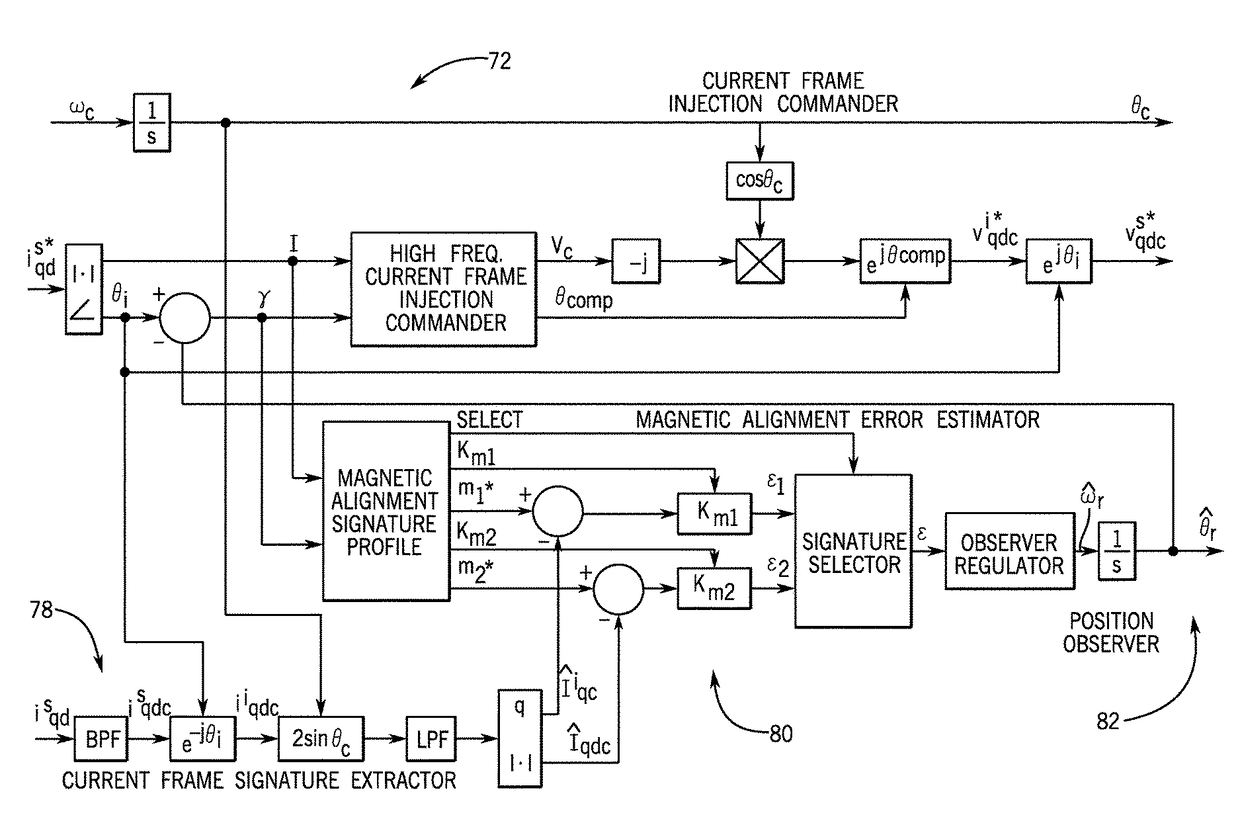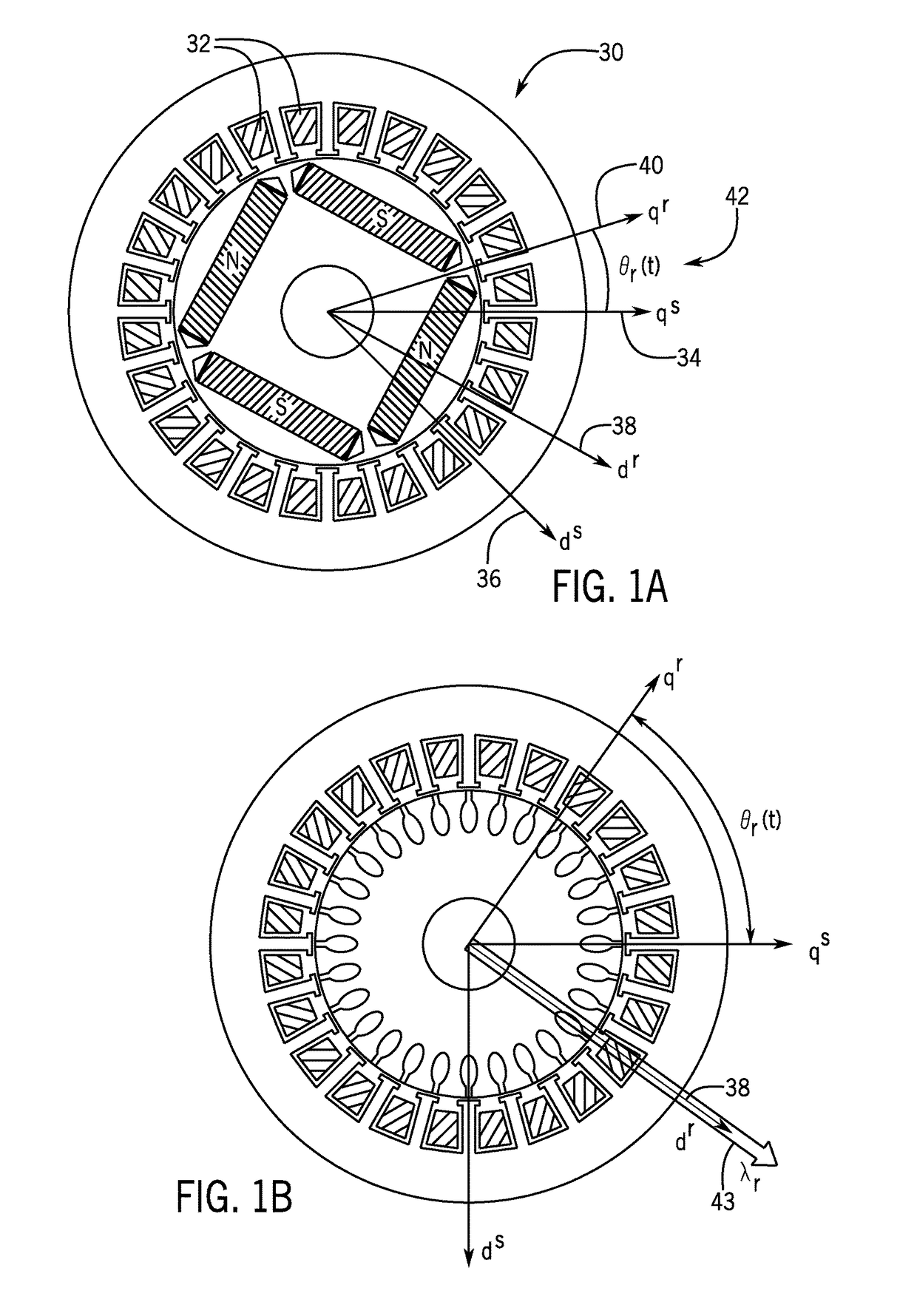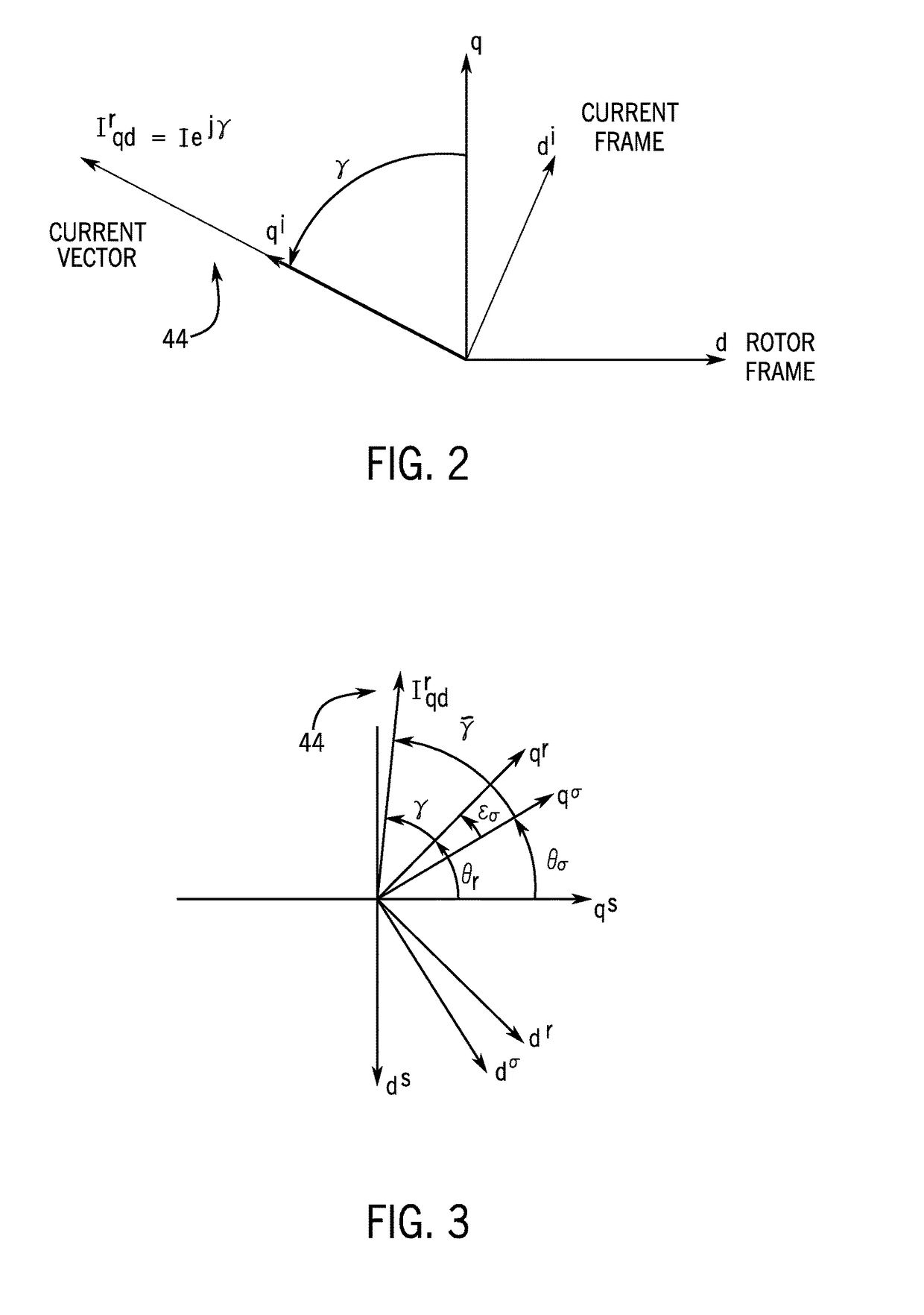System and method for sensorless control of electric machines using magnetic alignment signatures
a sensorless control and electric machine technology, applied in the field of electric machines, can solve the problems of sensorless control, reduced back-emf magnitude, and significant portion of the cost and overall complexity of the motor drive system
- Summary
- Abstract
- Description
- Claims
- Application Information
AI Technical Summary
Benefits of technology
Problems solved by technology
Method used
Image
Examples
Embodiment Construction
[0040]For purposes of better understanding the descriptions set forth herebelow, the following listing of the nomenclature and abbreviations which will be used is provided.
[0041]Reference frame unit vectors for AC machines[0042]qs stationary frame quadrature axis; aligned with a-phase in general[0043]ds stationary frame direct axis;[0044]qr, q rotor synchronous frame quadrature axis[0045]dr, d rotor synchronous frame direct axis[0046]qi current frame quadrature axis[0047]di current frame quadrature axis[0048]q quadrature axis of the specified reference frame (rotor frame if not specified)[0049]d quadrature axis of the specified reference frame (rotor frame if not specified)
Complex Vectors for AC Machine Variables (and Vector Generalization)[0050]f bold characters used for complex vectors and complex coefficients bold characters used for vectors and matrices[0051]fqd=fq−j·fd complex vector representation for ac machine variables[0052]fqd=[fq fd]T 2D vector representation of a complex...
PUM
 Login to View More
Login to View More Abstract
Description
Claims
Application Information
 Login to View More
Login to View More - R&D
- Intellectual Property
- Life Sciences
- Materials
- Tech Scout
- Unparalleled Data Quality
- Higher Quality Content
- 60% Fewer Hallucinations
Browse by: Latest US Patents, China's latest patents, Technical Efficacy Thesaurus, Application Domain, Technology Topic, Popular Technical Reports.
© 2025 PatSnap. All rights reserved.Legal|Privacy policy|Modern Slavery Act Transparency Statement|Sitemap|About US| Contact US: help@patsnap.com



